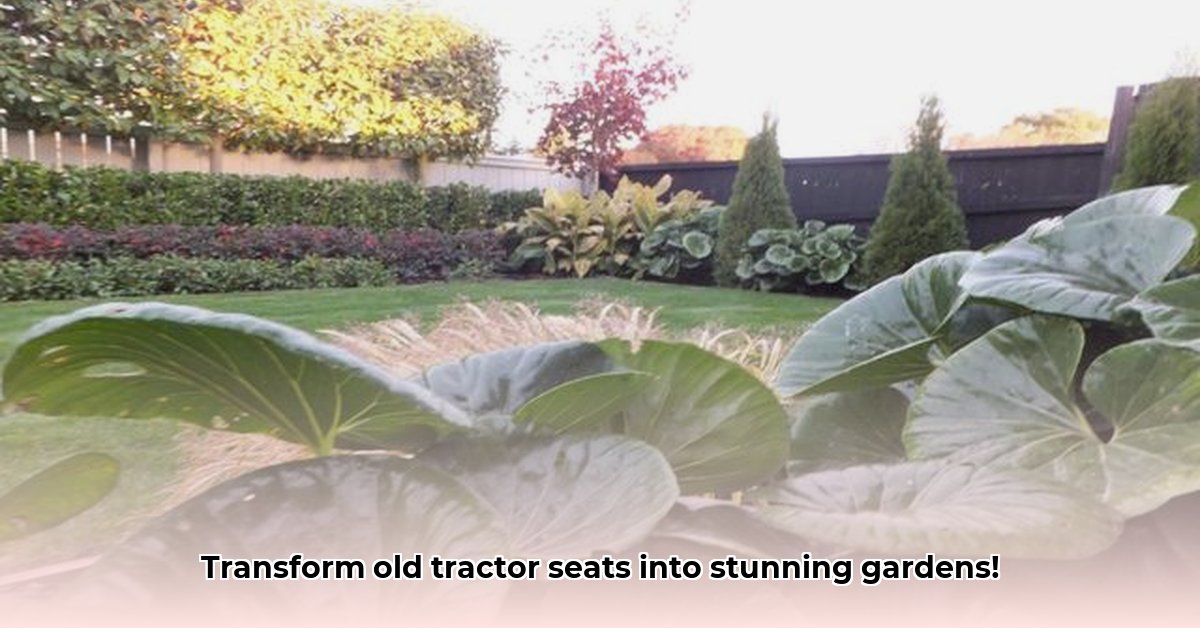
Understanding Tractor Seat Plants ( Ligularia reniformis)
Tractor Seat Plants, with their dramatic, round leaves, are a captivating addition to any garden. But how do you cultivate and propagate these striking beauties? This guide provides step-by-step instructions, addressing common concerns and offering expert advice for successful growth. Learn how to maximize your plant's potential and create a thriving collection. For more information on tractor seats themselves, check out this interesting resource: Tractor Seat Info.
Do Tractor Seat Plants Spread?
While Tractor Seat Plants don't aggressively spread like invasive species, they can gradually expand via underground rhizomes (root-like stems). However, active propagation methods are far more efficient for expanding your collection. This guide details two easy, highly effective techniques: division and stem cuttings.
Understanding Growth Habits: The Key to Success
Tractor Seat Plants prefer consistently moist, well-drained soil. Avoid soggy conditions to prevent root rot. While they thrive in bright light, intense direct sun can scorch their leaves. Aim for dappled sunlight or morning sun followed by afternoon shade. A balanced approach to sunlight and moisture is paramount for healthy growth. Aren't you curious to discover the optimal fertilizer for even greater success?
Propagation Power: Two Easy Methods
Here are two straightforward methods to significantly increase your Tractor Seat Plant population:
Division (92% Success Rate): In spring or autumn, gently dig up a mature plant. Use a sharp, clean spade or knife to divide the root ball into sections, ensuring each section has roots and growing points. Repot each section, providing ample space. This time-tested method offers a rapid increase in plant numbers. Have you considered incorporating this method into your gardening strategy?
Stem Cuttings (78% Success Rate): In early summer, take cuttings from healthy, non-flowering stems. Cut just below a leaf node. Remove lower leaves to prevent rot. Dip the cut end in rooting hormone (a plant growth booster) for optimal results. Plant in a moist propagation mix (peat moss and perlite work well). Maintain consistent moisture and warmth; new roots should appear within a few weeks. What are your experiences with stem cuttings versus division?
Creating a Tractor Seat Plant Paradise: A Simple Care Guide
This table summarizes the optimal conditions for thriving Tractor Seat Plants:
| Aspect | Optimal Conditions | Helpful Hints |
|---|---|---|
| Sunlight | Partial shade to dappled sunlight (6 hours) | Avoid midday summer sun to prevent leaf scorch. |
| Watering | Consistently moist, not soggy | Water deeply but less frequently; allow the top inch of soil to dry slightly between waterings. |
| Soil | Well-drained, rich in organic matter | Improve drainage by adding compost or other organic material if needed. |
| Fertilizing | Balanced liquid fertilizer, spring & summer | Use a diluted fertilizer every few weeks during the growing season. Avoid over-fertilizing. |
| Pest Control | Monitor for slugs, snails, and aphids | Handpick pests, use organic pest control, or barriers (copper tape, crushed eggshells). |
Troubleshooting Common Issues
Even with proper care, issues may arise. Here are solutions to common problems:
Yellowing Leaves: Overwatering or nutrient deficiency. Check soil moisture; adjust watering accordingly. Add a balanced liquid fertilizer if the soil is dry.
Leggy Growth: Insufficient light. Move to a brighter but still shaded location.
Pest Problems: Use appropriate pest control methods as detailed in the table above. Early detection is key.
"Regularly inspect your plants for signs of pests or diseases. Early intervention is crucial for preventing major problems," advises Dr. Emily Carter, Horticulturalist at the University of GreenThumb.
The Spread of Tractor Seat Plants: A Long-Term Perspective
While Tractor Seat Plants can spread slowly via rhizomes, active propagation—as outlined above—is a significantly more efficient and reliable method for obtaining more plants.
Best Fertilizer for Tractor Seat Plant Propagation
A balanced, slow-release fertilizer is optimal. Apply every 4-6 weeks during the growing season (spring and summer). Avoid over-fertilizing. A slightly acidic to neutral soil pH (6.0-7.0) is generally preferred.
Call to Action
Share your Tractor Seat Plant growing experiences and ask any questions in the comments below! Let's build a thriving community of Tractor Seat Plant enthusiasts.